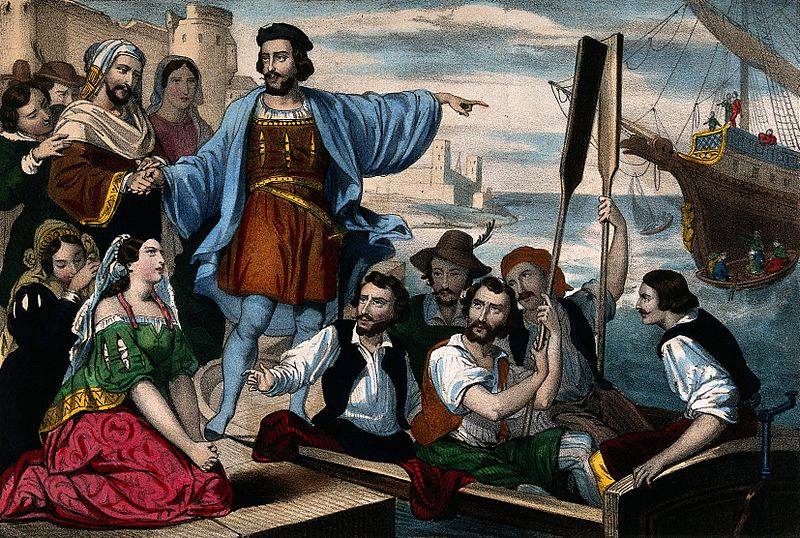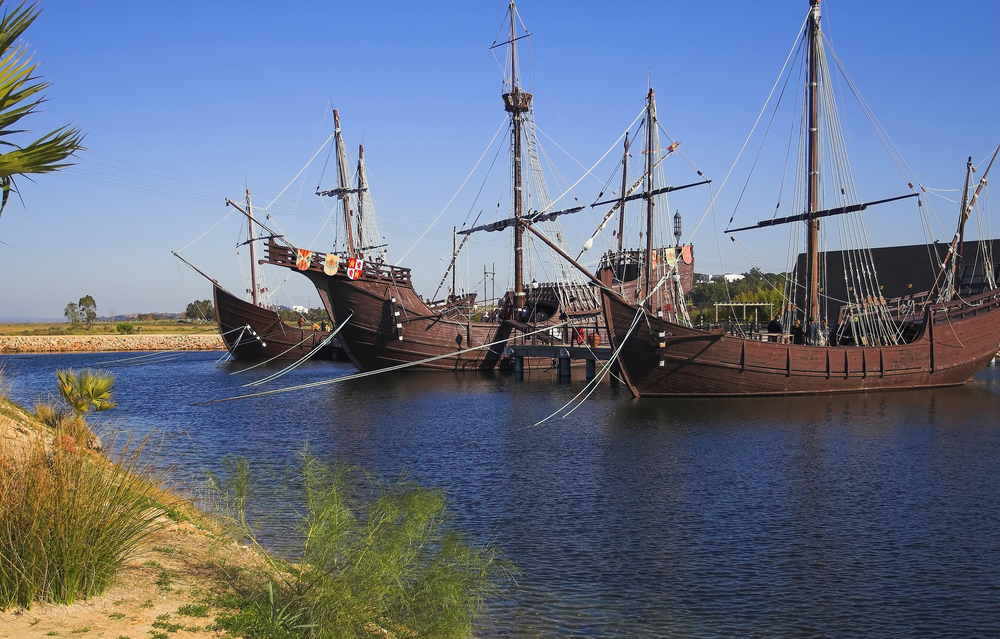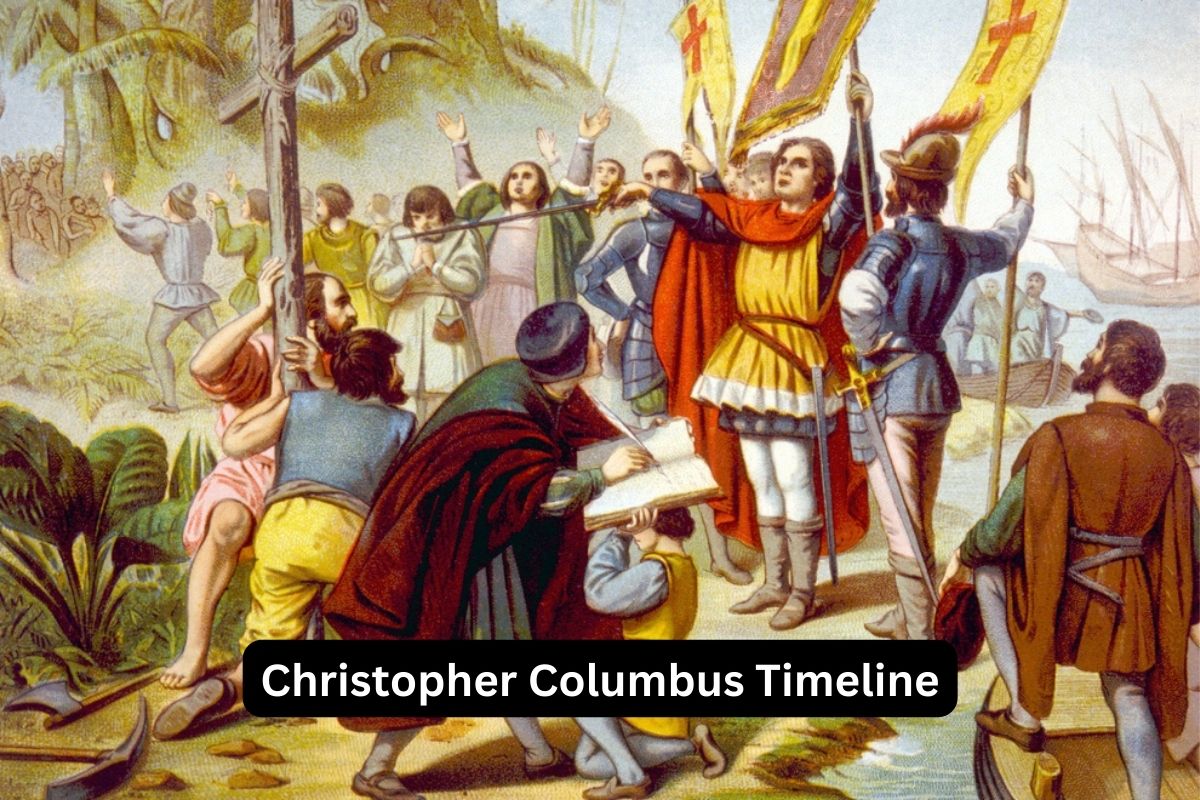Christopher Columbus was an Italian explorer born in 1451, best known for his four voyages across the Atlantic sponsored by the Spanish monarchy.
He mistakenly believed he had found a new route to the East Indies when he landed in the Americas in 1492. Columbus’s explorations marked the beginning of sustained European contact with the Americas.
Despite controversy over his treatment of native populations and a brief arrest in 1500, he made three more expeditions before his death in Spain in 1506.
Columbus’s journeys opened the path for the widespread European exploration and eventual colonization of the New World.
| Year | Event |
|---|---|
| 1451 | Born in Genoa, Italy |
| 1476 | Survives shipwreck off Portugal and settles there |
| 1485 | Presents his plan to reach the East Indies to the King of Portugal |
| 1492 | Begins his first voyage on August 3rd, lands in the Bahamas on October 12th |
| 1493 | Returns to Spain, then sets off on his second voyage |
| 1498 | Begins his third voyage, reaching present-day Venezuela |
| 1500 | Arrested and returned to Spain due to complaints and mismanagement |
| 1502-1504 | Embarks on his fourth and final voyage |
| 1506 | Dies in Valladolid, Spain on May 20th |
Timeline of Christopher Columbus
1451 – Born in Genoa, Italy
Christopher Columbus was born between August and October 1451 in Genoa, a significant seaport in Italy.
His father, Domenico Colombo, was a middle-class wool weaver, and his mother’s name was Susanna Fontanarossa.
Growing up, Columbus likely received a modest education; however, his passion for the sea and exploration became apparent at an early age.

1476 – Survives shipwreck off Portugal and settles there
Around the age of 25, Columbus survived a dramatic shipwreck off the coast of Portugal. The commercial fleet he was sailing with was attacked by French privateers off the Cape of St. Vincent. Columbus grabbed onto a piece of floating wood and managed to swim the six miles to shore.
Afterward, he settled in Portugal, where his brother Bartolomeo was working as a cartographer. During his time in Portugal, Columbus furthered his sailing knowledge and began formulating his plan to sail west to reach the East Indies.
1485 – Presents his plan to reach the East Indies to the King of Portugal
Columbus developed a plan to reach the East Indies (primarily India and China, rich in spices, silk, and gold) by sailing west, instead of the traditional route around Africa.
He believed that the world was smaller than was generally accepted, and thus the distance to Asia by sailing west would be shorter.
In 1485, Columbus presented his plan to King John II of Portugal. However, his plan was rejected, mainly because Portuguese experts believed Columbus’ calculation of the distance to Asia was significantly underestimated.
Undeterred, Columbus decided to present his plan to the Catholic Monarchs, Ferdinand II of Aragon and Isabella I of Castile, in Spain.
1492 – Begins his first voyage
After years of lobbying, King Ferdinand II and Queen Isabella I of Spain finally agreed to sponsor Columbus’ voyage in early 1492.
Columbus departed from Palos de la Frontera in Spain on August 3 with three ships: the Santa Maria, the Pinta, and the Niña. The expedition went westward across the Atlantic Ocean in search of a new route to Asia.
1492 – Lands in the Bahamas
On October 12, 1492, land was sighted. The first place Columbus arrived in the New World was an island in the present-day Bahamas.
Believing he had reached the East Indies, Columbus called the people he met “Indians,” a term that would be used for the native inhabitants of the Americas for centuries to come. The island was named San Salvador, although it’s unclear which modern-day island it is.

1493 – Returns to Spain, then sets off on his second voyage
Columbus returned to Spain in 1493, where he was greeted with much acclaim. News of his discovery of new lands (albeit not the East Indies as he had intended) quickly spread throughout Europe. Later in the same year, Columbus set off on his second voyage to the New World.
This time he commanded a much larger fleet of 17 ships, carrying around 1200 men. The intention of this second voyage was not just exploration, but the colonization and conversion of the indigenous peoples to Christianity.
1498 – Begins his third voyage
On his third voyage, Columbus set sail with six ships in May 1498. The fleet split into two groups: three ships to resupply the colonists on Hispaniola and the other three to explore further south.
Columbus and his crew discovered the continent of South America when they reached the Orinoco River delta in present-day Venezuela. Columbus believed he had found a continent previously unknown to Europeans.
1500 – Arrested and returned to Spain due to complaints and mismanagement
Columbus’ governance of the new territories was characterized by a brutal regime, with natives subjected to slavery, mutilation, or death for minor infractions. Spanish settlers who tried to oppose his rule were also brutally suppressed.
These factors led to numerous complaints being sent back to Spain. As a result, the Spanish Crown sent Francisco de Bobadilla, a royal commissioner, who arrested Columbus and his brothers for their alleged crimes in August 1500.
Columbus was transported back to Spain in chains. Although he was later released and forgiven by the Monarchs, he never regained his governorship.

1502-1504 – Embarks on his fourth and final voyage
Despite his fall from grace, Columbus was able to convince King Ferdinand that one more voyage could bring the abundant riches that had so far eluded them.
In 1502, Columbus set sail with four ships, hoping to find a strait in the Central American isthmus that would allow passage to the Indian Ocean and the East Indies. The voyage was arduous, involving storms, conflicts with natives, and the stranding of Columbus’s ship.
In 1504, Columbus and his crew were rescued from the island of Jamaica by a Spanish ship and returned to Spain, marking the end of Columbus’ voyages to the New World.
1506 – Dies in Valladolid, Spain on May 20th
After his fourth and final voyage, Christopher Columbus returned to Spain in 1504. His health had deteriorated during his travels, and he had possibly contracted a form of reactive arthritis known as Reiter’s syndrome.
Despite his failing health and diminished standing, Columbus persisted in lobbying the Spanish court for recompense based on the profits of the colonies he had discovered.
Over the next couple of years, his condition worsened. Christopher Columbus died on May 20, 1506, at the age of 54, in Valladolid, Spain. At the time of his death, Columbus still believed he had found a new route to Asia rather than discovering a new continent.
His remains were initially buried in Valladolid, but they were later moved a number of times, with claimed final resting places in both the Cathedral of Seville in Spain and the Columbus Lighthouse in the Dominican Republic.
